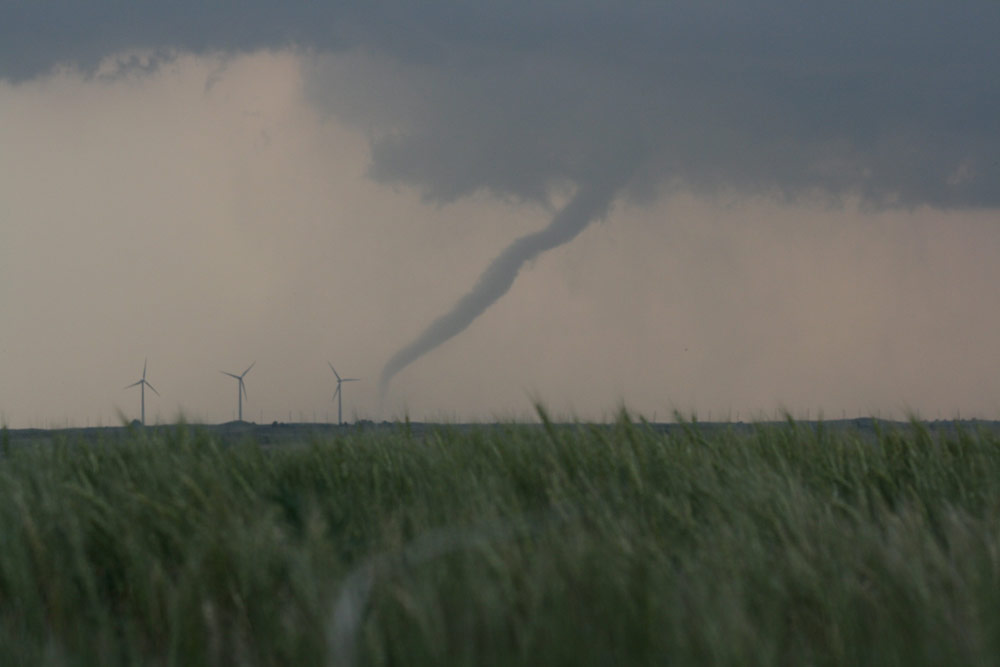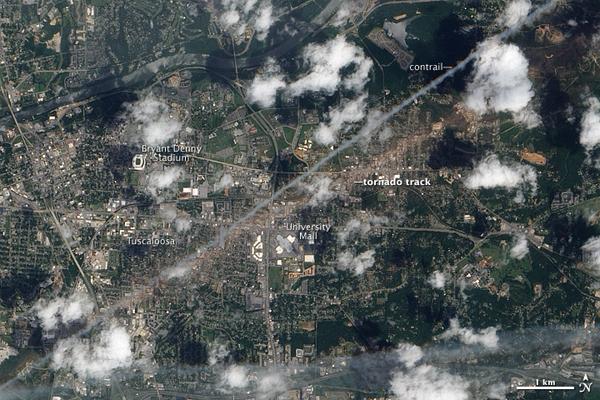
5 Tornado Safety Myths Debunked

Tornadoes conjure up images of massive funnel clouds tearing over the expansive Great Plains of the United States during springtime, but tornadoes range in size and strength and can happen anywhere, at any time of the year.
Although freak accidents happen ― and the most violent tornadoes can level a house ― most tornadoes are much weaker than the monster EF5s (the highest tornado rating) most people imagine, the National Ocean and Atmospheric Administration's Storm Prediction Center (SPC) says in their tornado FAQ, and knowing proper tornado safety tips can help you get through the storm,.
But there are a lot of tornado safety folklore and myths out there, so it can be hard to know what advice to follow. Here are five of the most pervasive tornado safety myths, as well as a few tips to follow:
Myth #1: Opening windows will equalize pressure.
The SPC said it best: "Opening the windows is absolutely useless, a waste of precious time, and can be very dangerous. Don't do it."
All it might get you is a bunch of debris blown into your house by a tornado's fierce winds ― which could be dangerous. And if a tornado hits your house, it most likely will break the window anyway, the SPC noted.
Myth #2: The southwest corner of a basement is the safest corner.
Sign up for the Live Science daily newsletter now
Get the world’s most fascinating discoveries delivered straight to your inbox.
While a basement is a good place to take shelter from a tornado, no corner of a basement is safer than any other.
According to the SPC, this myth arose from the mistaken belief that most tornadoes come from the southwest and that any debris they generate would fall into the northeast corner of a basement. But tornadoes can arrive from any direction, and their winds are spinning in a vortex and can be blowing from any direction.
If you take shelter in a basement, the best place to be is away from any windows, under a sturdy workbench or mattress, and away from any shelves or other things that might fall on you. You should also make sure you're not directly under any heavy appliances that may be on the floor above.
Myth #3: When you’re on the road, the best place to ride out a tornado is under a bridge.
Definitely not! Do not do this!
Although it might seem like the bridge over your head would protect you, hiding under an overpass or bridge is actually very dangerous, because a tornado's winds can blast debris underneath the structure. The storm's winds could blow you out from underneath and possibly into the tornado itself, or the bridge could collapse on top of you, the SPC warned.
But if you're on the road, you don't want to stay in your car, either. "Vehicles are notorious as death traps in tornadoes, because they are easily tossed and destroyed," the SPC said.
Your options depend on where the tornado is and what's around you. If the tornado is far away or not heading toward you, the best option may be to head in the opposite direction and get out of its path. If it's bearing down on you, and there's a sturdy structure nearby, take shelter there. But if no building is around, get as far away from the road and cars as possible, and lie down in a low spot, the SPC advised.
Myth #4: Tornadoes never cross hills, rivers, roads, etc.
If a particular town or other location hasn't been hit by a tornado that passed nearby, it didn't have anything to do with the area's topographical features, it was just luck, the roll of the dice.
Tornadoes are not guided or repelled by roads, hills, streams or rivers. In fact, a tornado has even crossed the Mighty Mississippi. [Infographic: Tornado Alley Facts & Stats]
The SPC noted that local wisdom had it that towns such as Topeka, Kan., and Waco, Texas, were immune to tornadoes, until they were hit by F5s (in 1968 and 1953, respectively). (The current Enhanced Fujita scale was preceded by the Fujita scale.) Those are extreme examples and larger metropolitan areas (more on that in a minute), but plenty of other places have been rudely awakened from various forms of this myth.

Myth #5: Tornadoes avoid big cities.
Related to Myth #4, many people think big cities are immune to tornadoes. That’s not the case: Many cities ― including Dallas, Atlanta, St. Louis (which has been hit a whopping four times) ― have been hit by tornadoes . [Skyscraper Storms: 7 Big City Tornadoes]
Cities can simply seem like they aren't tornado-prone for some innate or meteorological reason when it's really just statistics: Cities occupy a smaller area relative to the surrounding, more rural areas, and are therefore less likely to be hit.
In fact, damage caused by tornadoes can be worse in big cities, due to their high concentration of people and structures. Birmingham and Tuscaloosa, Ala., sustained severe damage from a tornado that tore through both cities on April 27, 2011, and was on the ground for 80 miles (129 kilometers) ― killing 65 and injuring 1,500. The tornado bucked a downward trend in tornado deaths, not only because of its powerful EF4 strength, but also because it hit highly populated areas.
For more tornado safety tips, read through the Storm Prediction Center's helpful guide.
Follow Andrea Thompson @AndreaTOAP, Pinterest& Google+. Follow OurAmazingPlanet @OAPlanet, Facebook & Google+. Original article at LiveScience's OurAmazingPlanet.

Andrea Thompson is an associate editor at Scientific American, where she covers sustainability, energy and the environment. Prior to that, she was a senior writer covering climate science at Climate Central and a reporter and editor at Live Science, where she primarily covered Earth science and the environment. She holds a graduate degree in science health and environmental reporting from New York University, as well as a bachelor of science and and masters of science in atmospheric chemistry from the Georgia Institute of Technology.









